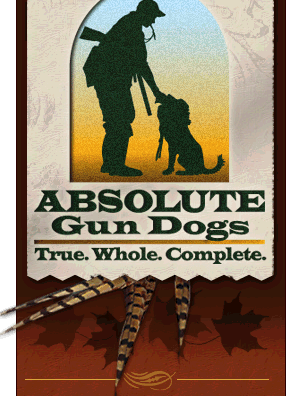


Dan's Journal
Summer Scenting Conditions
Summer is upon us and the heavy and unusually long Spring Walleye bite has ended. What to do? What to Do? How about plenty of marked retrieves, in particular, short ones; the shorter the better. This is always a great thing to do when scenting conditions are poor. This time of year it doesn’t matter how good the nose, even the most experienced dogs who are great markers will struggle with the green, rank odors mother nature produces in late Spring and Summer to protect her newborn additions. For a dog trainer with Fall trials only a few months away it is frustrating to say the least, but it is also a great opportunity to build a dog’s marking and scenting confidence no matter what the age or experience level.
Short retrieves are often times overlooked by many as it’s not much fun to see your dog pin a fifteen or twenty yard retrieve. But as many of you know, these can often be the toughest retrieves. You’ve got to deal with the dog’s adrenaline, and their unfamiliarity with short falls on top of poor scenting conditions. Overrunning is a typical result of these circumstances. Short retrieve work will force the dog to pin point the retrieve visually, as he doesn’t have much time to work the wind on a short retrieve. As always, you want your dog’s eyes to work with his nose, only more so now than when scenting is good. The closer his eyes get him to the fall, the less work necessary for his nose.
When we start a puppy or young dog on retrieves, we don’t typically start with 80 yard retrieves and then shorten the distance, right? No, we start with short confidence-building retrieves and slowly make them a little longer and more difficult. The same principle applies to poor scenting conditions, only by this time the dog is programmed to make long difficult retrieves as that’s what we as dog handlers and owner’s love to see. But as is the case with most training issues, if we go back to the basics we are much more likely to achieve our goals with the least amount of pressure on the dog. So we need to stress the importance of short retrieves and make the dog successful, so as not to compromise all of other hard work we’ve put into the dog.
We’ve all seen the benefits of good marking whether in the field chasing wild birds or at field trials. On hot fall days we want our dogs to use as little energy as possible as to avoid overheating. I’ve seen and experienced this numerous times in the early September trials when the temperature has been as high as 90 degrees. When it gets this hot the scenting can be poor and the dogs nose typically isn’t working at 100% either. Pin pointing short retrieves when the dog’s adrenaline and excitement is somewhat uncontrollable is critical. If your dog runs 2 yards from the fall vs. 15 yards past it, you’ve conserved both time and energy and increased your odds. The list goes on and on, so get to work.
As always, I’d like to wish all trial competitors the best of luck in their quest for the 2nd, 3rd, or 4th place ribbons at the next trial.
